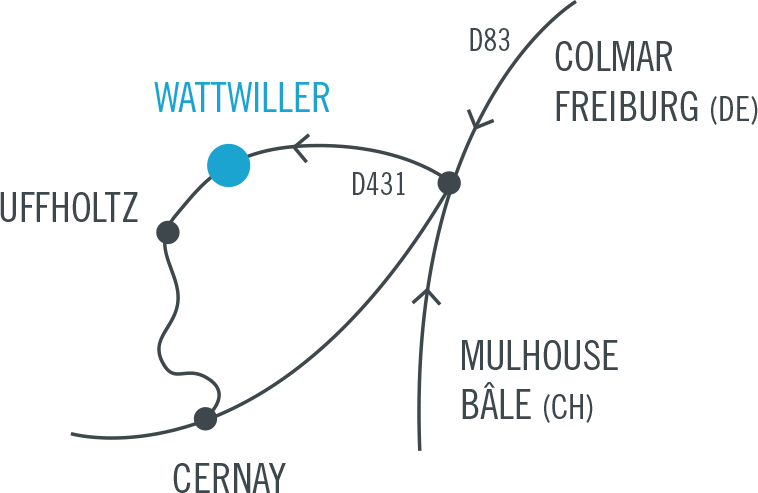Consisting mainly of a monolith of ice and ink frozen in the mass, Circuit Fermé can be described as “ambitious”, for the logistics arising from this block in itself, integrating the idea of the reverse side of the set, in the sense that one part of the installation will eventually generate more than 2000 litres of water, which would have to be drained or, as in this case, integrated into the installation, with a recovery system, thus supplying and activating a second part of the work.
The monolith of ice and ink is an idea that I had been thinking about for some time and which had given rise to a few small-scale tests. It logically found an echo within this geological environment. It was therefore in the resolution of the technical constraints (the physical disappearance of the block of ice and the evacuation of the water) that two hitherto distinct projects were encountered: the block of ice and the mechanism of percussion in the water, causing the tuff stones to fall into the metal drums. The fact of associating them seemed obvious, since it served as a reminder of certain geological processes, water being the active agent in the sedimentation/erosion cycle. Tuff, which is a sedimentary rock resulting from the action of fresh water, had its place in the installation.
There is a certain opposition between the minimal and contemplative side of the block of ice and the more “expressionist”, chaotic and dynamic side of the second part of the piece. I am also interested in the idea of a two-stage installation, as the two elements cannot be “active” simultaneously, except for a brief moment of transition, when the block has almost completely melted and the complete filling of the four barrels triggers the mechanisms to start. The only vestige that remains of the first state of the installation is the circulation of water blackened by Indian ink, giving substance to the percussion. This system of percussion in the drums is also a nod to a welcome rite practiced in Vanuatu, where the music comes directly from multiple strikes on the surface of a river’s water.
Based on the principle of communicating vases, Circuit Fermé is therefore a kind of water clock, following on from another form of watchmaking. There are in fact several temporalities: that of the melting ice and that of the suspended stones threatening to fall, creating tension in space. The spectator is caught between this slow activity and this latent time. It is as if he is torn between two moments, the second part of the piece – the percussions in the water – being activated only once the monolith has completely melted. From then on, the relationship is reversed: the spectator will have to imagine what existed before this black water, before the explosive chaos produced by the splashes. There is also the time of musicality, that of the stones that mark the rhythm. Such a sonic presence is also tangible in many other pieces.
